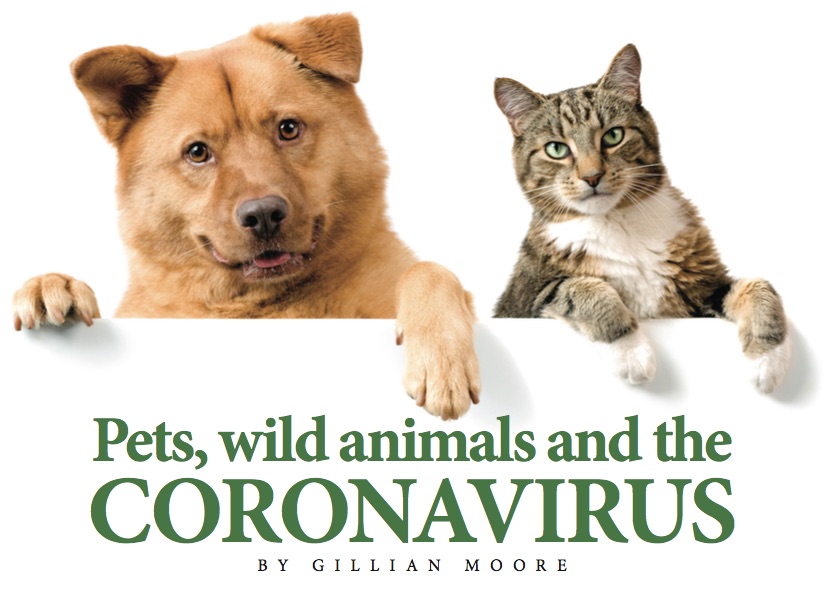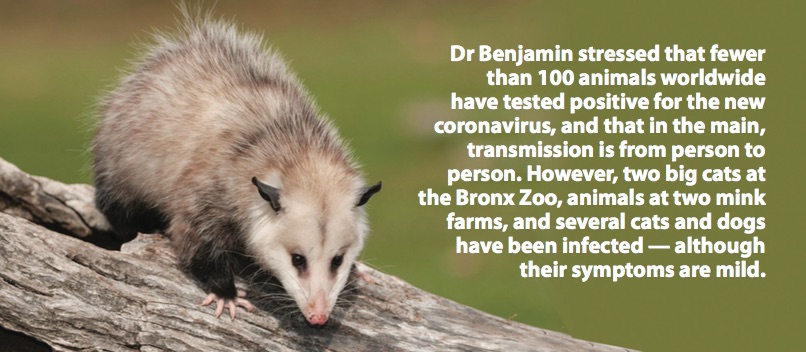
Everyone wants to keep their loved ones safe from SARS- COV-2, the virus that causes COVID-19, and pet-lovers are no exception.
Amid news of the virus playing havoc with human life around the world, reports have emerged of animal infections, most notably of pets.
To address the concerns of pet owners, The UWI School of Veterinary Medicine within the Faculty of Medical Sciences, hosted a webinar on July 28 entitled Animal Lovers and COVID-19: What You Need to Know.
Co-moderated by Large Animal Medicine lecturers Dr Anil Persad and Dr Marc Driscoll, the online discussion featured presentations from faculty lecturers such as Professor Christopher Oura (Veterinary Virology) and Dr Lisa Benjamin (Veterinary Public Health).
Dr Benjamin stressed that fewer than 100 animals worldwide have tested positive for the new coronavirus, and that in the main, transmission is from person to person.
However, two big cats at the Bronx Zoo, animals at two mink farms, and several cats and dogs have been infected — although their symptoms are mild.
So how do you know if your pet may have COVID-19?
Dr Benjamin said the symptoms are similar to those that present in human beings: fever and respiratory indicators like sneezing, coughing and shortness of breath, and gastrointestinal symptoms such as vomiting and diarrhea.
She said if a pet is suspected of having the infection, “the vet should be consulted so he or she can diagnose the cause of your pet’s illness by a process of elimination” noting that the test for coronavirus is expensive and thus “routine testing is not recommended”. She added that so far, the direction of transmission to pets has been from human to animal.
Dr Benjamin said tests have shown that “chickens, pigs, mice and ducks are not readily infected, but ferrets are very susceptible” and will be used in lab studies.
She cautioned: “Cats may get infected more readily than dogs and spread from one cat to another.”
Dogs and cats can get infected if someone in the household has the disease.
To protect your pet from exposure, she advised: “Wear masks when dealing with animals” when a person is suspected of having the virus.
When walking your dog, Dr Benjamin recommends:
“Restrict the movement of your pet,” she said. “You don’t want your pet to come into contact with infected people.”
She advises that vets, pet shops and people who board pets should develop written biosafety and biosecurity protocols for their facilities, for example, how often they will clean up after the animals. They should also display signs to encourage the use of face masks. These places should “facilitate hand hygiene; allow for distancing of workers, customers and visitors; and clean and disinfect surfaces that are touched often. Workers should stay at home if they are ill.”
“Wash your hands before and after feeding or cleaning up after your pet” if it is unwell. Additionally, wear gloves and masks, and ensure proper ventilation.
Prof Oura used his presentation to highlight the links between microbes existing in the zoological world and our human sphere.
“Domestic and wild animals play an important role in spreading pathogens to humans,” he said. “However, there is a single species responsible for most of these pathogens coming across and causing pandemics, and that’s us humans.”
Prof Oura listed activities having an adverse effect on the environment or which create opportunities for pandemic spread, including:

The veterinary virologist said 75 per cent of emerging infectious diseases that affect humans begin as animal diseases, and explained that viruses can mutate and jump from one species to another. Viruses travel from wildlife to domestic animals and then to humans, but also can go directly from wildlife to humans. He noted that SARS-COV-2 was likely to have come from bats, possibly through another species along the way.
He cautioned that Trinidad and Tobago could be at risk for a new viral outbreak:
“In T&T we have wildlife that we hunt and domesticate, domestic animals and vectors... many species of bats, howler monkeys and rodents.”
We are also very close to a “hotspots of viral emergence” in South America, and “animals and birds are being smuggled here, potentially enabling zoonotic diseases.” Prof Oura said the current crisis showed how natural and human systems affected each other, with humans impacting the environment, animals impacting our health, and coronavirus lockdowns affecting the economy.
“Economics, community engagement and the social sciences are all linked. Everything — people, animals and the environment — is intricately connected,” he explained.
This is part of why “people need to work across disciplines,” Prof Oura said, and why a “One Health” approach is so important.
He said “government agencies should collaborate and start pooling expertise in a trans-disciplinary” fashion, especially with regard to “agriculture, the environment and human health”.
“We must not blame wildlife. We need to change our habits and customs and learn from our experiences, or worse will happen,” he stressed. “If we don’t change the way we are interacting with our planet and nature, and understand these connections, we will suffer even worse pandemics.”